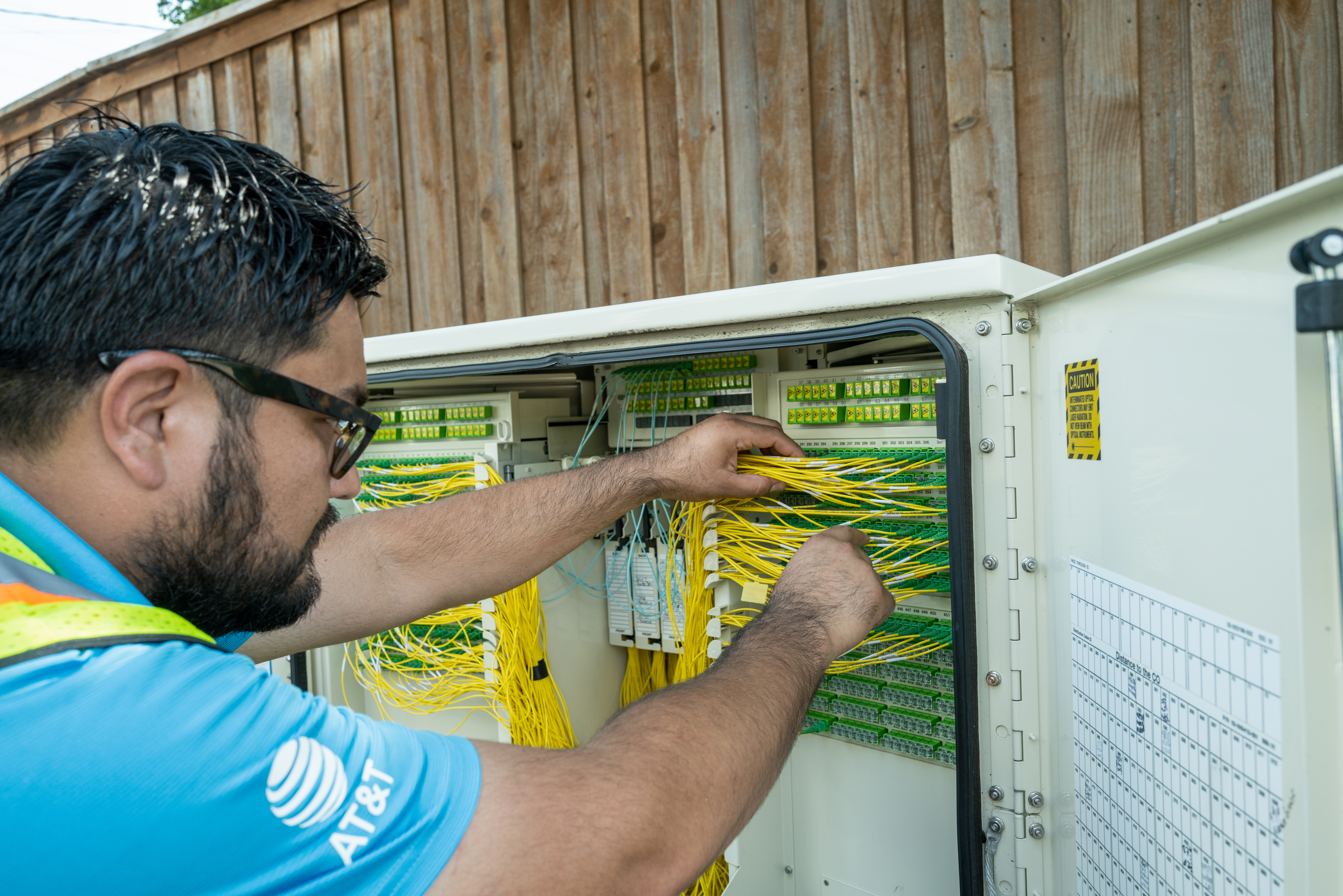They say one of the most stressful things in life is moving—but it doesn’t have to be. Sure, there’s a lot to think about when you’re planning a move, like where to buy moving boxes, whether or not you should look into moving companies, and how to move your Internet and TV service to your new space. But before you panic, follow these moving tips to prepare. Sometimes all it takes is a little extra planning to make moving a little easier.
10 Moving Tips That’ll Make Your Life Easier
Tip 1: Do a Good Declutter
Chances are you don’t need that promo t-shirt you got from a blood drive, that book you hate that’s gathering dust on your bookshelf, or that broken computer component you’ve been promising yourself you’re going to fix for over three years. If it’s been a minute since you’ve decluttered your space, prepping for a move is a great time to sift through your stuff and decide what should go with you, versus what definitely shouldn’t take up space in your new home.
But don’t just toss everything in the garbage. Gently used clothing and home goods can be donated, tech accessories can be recycled, and some of your unwanted things might be worth making a buck off of, so consider listing it for sale online or via an app. And don’t forget your friends, who may want that Dogs Playing Poker velvet picture you want to get rid of.
Tip 2: Do Your Research on Moving Companies—and Book Early
If your friends aren’t down to help with a grassroots move, it’s probably time to start looking into moving companies. It’s safe to say that not all moving companies are created equal, which is why it’s a good idea to do your research. You can start by asking friends and family which moving companies they’ve had good experiences with, then go online to see what kinds of reviews they have. From there, call the ones that seem best to you and get a quote. Not only can this help you with your moving budget, but if you have a complicated move or you’re moving from one state to another, you can find out which moving companies are best prepared to help make your move easy.
Once you find the moving company that works best for your needs, make sure you book as early as you can—especially if you’re moving during the busy times at the beginning or end of the month. Flexibility may work in your favor, if you’re able to move during an off-season period—some moving companies offer discounts or better rates if you book your move during a less busy time. Either way, make sure you factor in a tip and leave enough funds to cover an extra couple of hours on top of the estimate—just to be safe.

Tip 3: Invest in Moving Boxes
Wondering where to get moving boxes? It can be tempting to just cobble together a set of boxes that you’ve scavenged from grocery stores or shipments you’ve received over the years, but buying honest to goodness moving boxes will save you a ton of headaches. While it’s admirable (and eco-friendly) to reuse boxes, boxes that may have been used to move or package other items may not be as structurally sound—which means they could fall apart during your move. Investing in a set of moving boxes should have you set for at least three moves, if not more, depending on how well your boxes hold up. And as a bonus, they’re often made with carrying handles to make them much easier to lug from your house to the truck, then into your new space.
There are a lot of options available to you if you’re unfamiliar with where to get boxes for moving—for example, there are a number of online outlets that sell bundles of moving boxes according to the size of your space, which can help you plan your pack. Alternately, you can buy moving boxes from moving companies.
Tip 4: Pack by Room
You’ve probably heard the term “divide and conquer,” but it’s also good advice on how to pack for your move. Moving can be overwhelming, so as much as you can section it out into bite-size pieces you can take care of bit by bit, the easier it’ll be. Start with one room and pack the things you know you can live without until they’re unpacked in the new space, then keep going room by room until you’re done. Oh, and one more thing to keep in mind…
Tip 5: Pack Smart
Don’t just throw a bunch of stuff in a box and call it a day. Think about how you’re packing things, and who’s going to be lifting what you’re packing. Pack heavy things like books in small boxes. Don’t leave a lot of space in your box—use lighter things like towels, sheets, and clothes to fill any empty spots. Put heavier things on the bottom and lighter things on top. And remember that bigger boxes are best for lighter things—for example, pillows, quilts, and bedding.
But don’t be afraid to mix things up a little in the name of protecting fragile goods or taking up space. For example, use towels to wrap your dishes rather than investing in bubble wrap. Stuff socks in your shoes or use them to fill up boxes that could take a little extra in them. Also, think organizationally—tape hanging hardware to its corresponding piece of art so you don’t lose it in transit, use twist ties to manage cords (and tape them to their corresponding tech), and use sandwich bags for smaller items like screws and hardware that are easy to misplace. The more organized you are in your packing, the easier it will be when you unpack on the other end.
Tip 6: Label Your Boxes Clearly
Speaking of, don’t just label your moving box with the room it goes in—give it a little more context so you know what’s inside the box to make it easier to manage when you’re unpacking. For example, both clothing and bedding probably go in your bedroom, but adding that additional detail can help determine what goes where—and what needs to be unpacked first. Plus, it can help your movers determine weight for carrying and placement in the moving truck when it comes time for them to lug things downstairs and load up the back of the truck.
Tip 7: Update Your Address
While you’re in packing mode, it’s a good idea to update your addresses on any accounts that need it—specifically subscription services that send things to your home on a regular basis. You don’t want your prescriptions or pet food sent to the wrong house, and you don’t want to have to wait for a replacement to be sent once you realize they went to your old address. The sooner you remember to take this step, the better. And in the same vein…
Tip 8: Switch Your Services
Make sure you’ve made plans to switch over your utilities as soon as you know your move-in date and book your moving company. Some utilities may be easy to switch over, like water and power—often they just need to transfer your service to the new address on a particular day, but they may require some kind of deposit to do so. If you currently have internet or TV service, you may have to arrange for a technician to come out to your new address to help set up service, depending on your provider.
If you’re transferring AT&T Internet service, you may be able to make the move yourself. An AT&T moving specialist will be able to help guide you when you call 800.288.2020. If you’re currently not an AT&T Internet customer, you might want to consider checking which plans are available at your new address. A move can be a good opportunity to switch.

Tip 9: Pack a Moving Day Bag
Before you put everything away in boxes, make sure you set aside enough stuff to keep you going for a few days as you settle into your new space—chances are you’re not going to be fully unpacked within a couple hours of completing your move, so it’s a good idea to make sure you have essentials on hand for at least a few days. Of course, this means having clothes on hand, but don’t forget any medications, towels, toiletries, pajamas, even slippers. Having something comfy to put on after a stressful day of moving can make a huge difference in your stress levels. Another tip? Save some utensils and paper plates so you can easily order in and have everything you need for meals.
Tip 10: Prep Ahead for Moving Day
Sometimes the little things make a big difference. This can be as simple as stacking boxes in areas that are easier to get to in your home, so your movers can have access to them. If you have pets, you may want to consider moving them first, then putting them in a room with some food and wee pads or a litter box so they have somewhere to feel safe while the move is happening. And make some time to have breakfast (or lunch, depending on when your movers are scheduled) so you’re properly fueled for the day. Make sure you have water for you and your movers. And last but not least, do one final sweep of your space to make sure you’re not leaving anything behind.
Then, enjoy your move! Remember that it’s a day to go with the flow and just do what you can to make it as easy as possible without stressing yourself out. And if you do get stressed, just keep your mind on what it’s going to feel like when you’re in your new space—and how good it’s going to feel when you’re unpacked. Welcome home!
This article is AT&T sponsored content written by Carly Milne, a TechBuzz contributor. The statements in this article are her own and don’t necessarily represent the positions, strategies, or opinions of AT&T.





